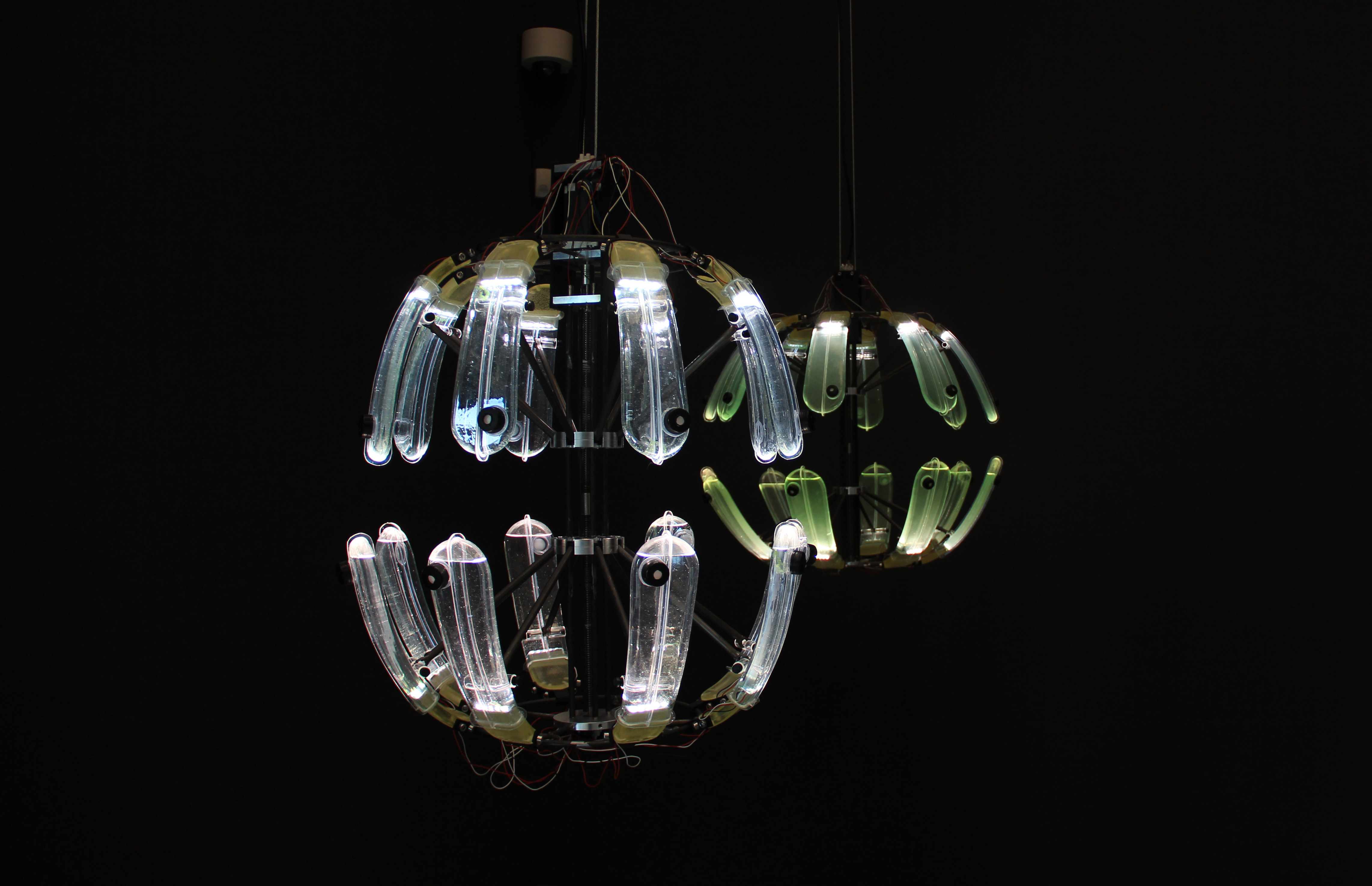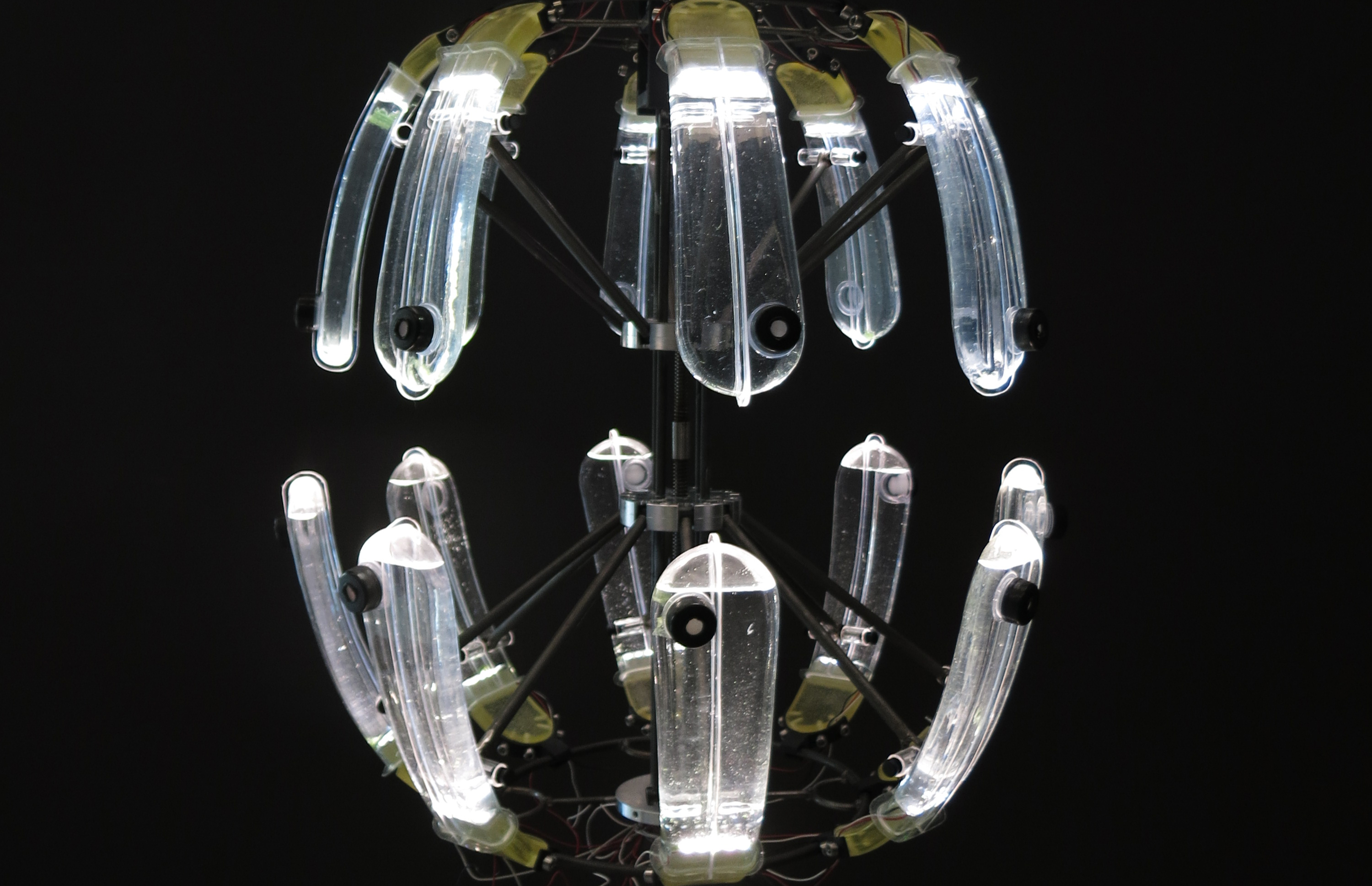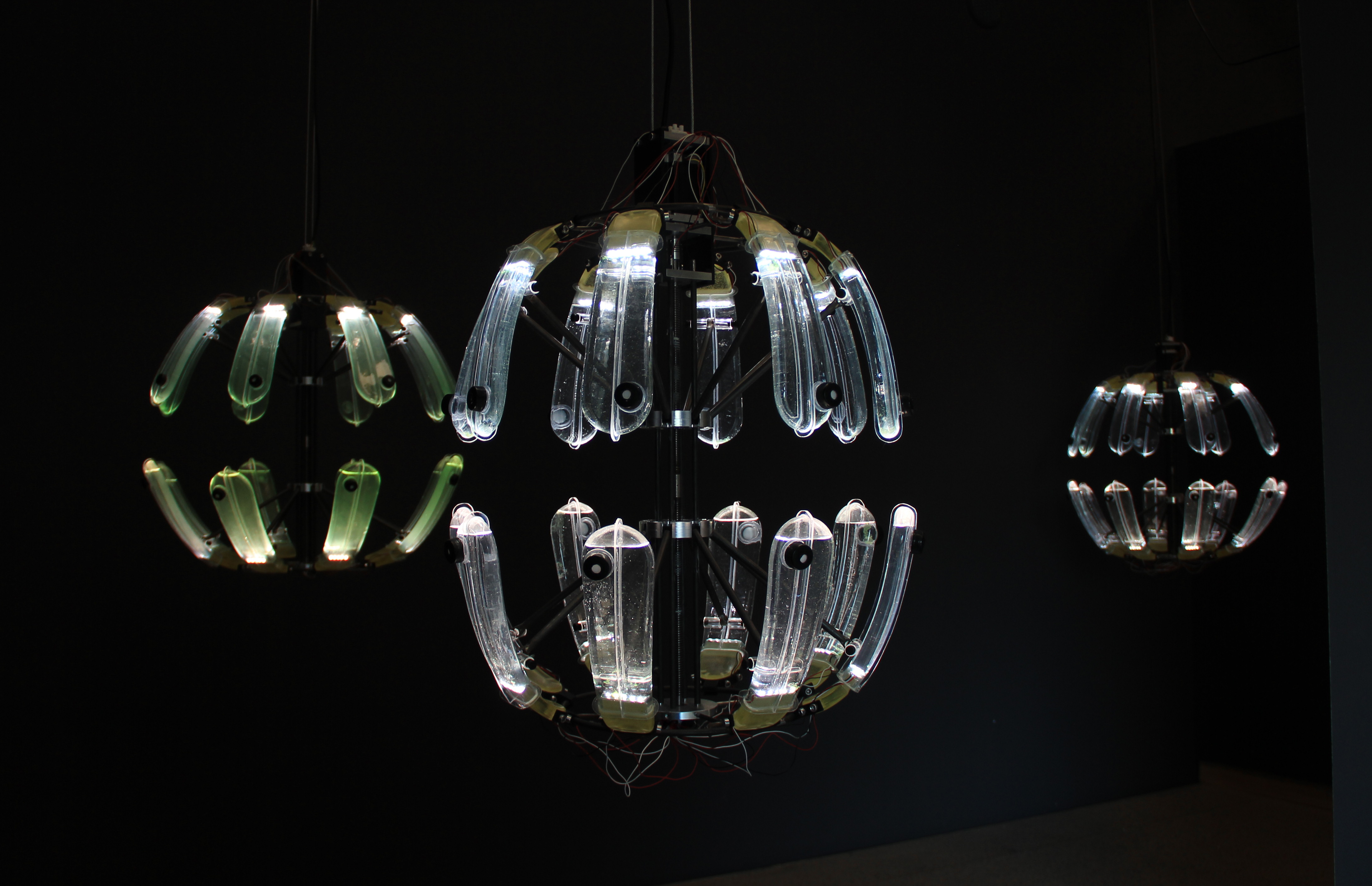Did you know that we owe every second breath we take to the algae in the sea? And that minerals have been absorbing CO2 for billions of years while converting it into important nutrients? Designer Kim van den Belt decided to combine these two facts in order to design Kaia: a living lamp that not only produces light, but also filters CO2 from its environment.

Being able to live in symbiosis with nature, that was Kim’s idea when she designed the living Co2 filter. It was important to design a product that was sustainable, but also pleasing to the eye. Van den Belt participated in the Talent Pressure Cooker organized by BioArt Laboratories in Eindhoven where she developed the living lamp together with biologists Henk Bolhuis and Michele Grego, real algae experts.
“By intertwining creativity (imagination) with science while collaborating, new, interesting innovations arise that can be produced in a relatively short period of time.”
In order for the algae to grow in relatively dark rooms, lighting had to be installed. And for the algae to filter out the CO2 a constant air current was created through a filter.


Since Kaia is alive, it is important for the user to take good care of it. Where we had Tamagotchi's in the 90s, now we have algae infused lamps that need to be fed. But next to feeding, the algae inside Kaia also have to be 'harvested' every two months, with new algae taking the place of the old ones. The harvested algae can be filtered and the dry biomass can be used to make biomaterial, biodiesel or food, for example.

By creating a symbiotic relationship with our material possessions, Kim hopes that we will perceive our belongings differently and value them more. This can be seen as a counter-reaction towards our current consumerist society. And of course, Kaia is designed to be as sustainable as possible: the idea is to produce the lamp CO2 neutral or CO2 negative, in order for the emissions to ultimately be equal to the CO2 stored by the algae. The project must also be fully recyclable, which realized by using pure materials. By using these pure materials, parts of the lamp can also be easily replaced when in need for a fix.
“We don’t throw away our pets just like that, which should be the case with our material belongings too.”

“For me, a design would never have succeeded if, in the final product, we had only taken from nature, exhausted nature. We have to find a way to give back to nature in new developments.” Kim explains. At the moment, the designer is already working on the next step: allowing olivine to disintegrate and growing algae in a completely energy neutral way, in a way that the disintegrated olivine can serve as food for the algae. As a result, CO2 is absorbed twice in the process in a natural way and the circle is finally completed.
“We must not forget that we are part of nature, not its owner.”

Share your thoughts and join the technology debate!
Be the first to comment